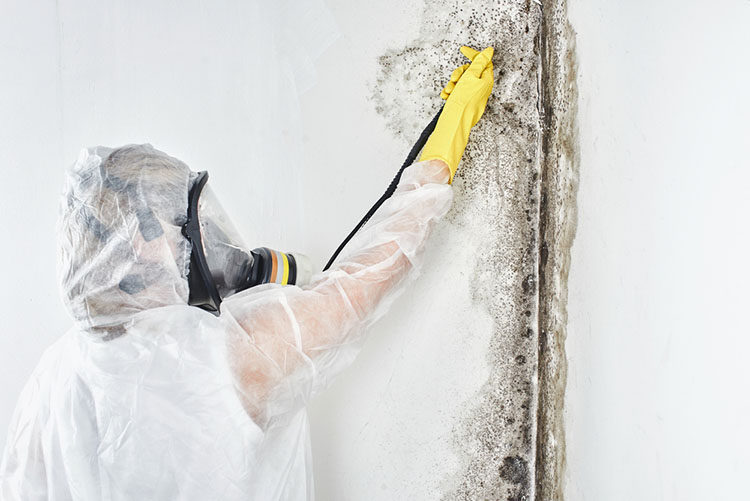Support on What to Do After Mold Remediation
Wiki Article
Effective Post Mold Remediation Solutions for Your Home
Mold development in homes can be a persistent concern, usually needing a methodical approach for efficient post-remediation services. From comprehending the elements that contribute to mold and mildew growth to applying proper cleansing strategies and wetness control steps, the process can be complex yet critical for preserving a healthy living environment. Post remediation mold testing near me.Recognizing Mold And Mildew Development Elements
Mold growth is affected by a range of variables that are important to understand in order to effectively resolve and prevent its proliferation. Comprehending these elements is essential in applying effective mold and mildew remediation methods. The key aspect contributing to mold and mildew growth is moisture. Mold and mildew spores require wetness to prosper and sprout, making humid or wet atmospheres very susceptible to mold and mildew infestations. Poor ventilation can also cause moisture accumulation, producing an optimal breeding ground for mold.
Additionally, air movement and light exposure can impact mold development. Areas that do not have appropriate air flow and natural light are more prone to mold and mildew development. By attending to these elements adequately, people can properly mitigate mold development and guard their living environments.
Correct Mold Cleansing Strategies
Using reliable cleaning techniques is vital in addressing and preventing the reappearance of mold contamination in indoor settings. When managing mold and mildew, it is essential to prioritize safety and security by using safety equipment such as handwear covers, masks, and goggles. The initial action in appropriate mold and mildew cleaning is to consist of the affected area to stop the spread of spores to unpolluted areas. This can be accomplished by sealing off the room and using air scrubbers or negative air equipments to keep air high quality.
Applying Moisture Control Actions
To properly avoid mold and mildew growth and contamination in interior environments, carrying out wetness control actions is paramount. Furthermore, making sure correct air flow in areas susceptible to moisture buildup, such as bathrooms and kitchen areas, can help reduce the risk of mold growth. By carefully implementing these dampness control steps, homeowners can effectively minimize the possibility of mold and mildew recontamination and keep a healthy interior atmosphere.Using Natural Remediation Solutions
After successfully implementing wetness control steps to avoid mold and mildew development in interior environments, property owners can currently check out the performance of natural remediation solutions in maintaining a healthy and balanced space. Natural remediation services utilize eco pleasant approaches to fight mold and mildew and mildew, making them a preferred selection for those looking for safe choices. One such solution is utilizing vinegar, a natural antimicrobial representative, to disinfect and tidy surface areas infected by mold. Simply weaken vinegar with water and spray it onto the affected locations, permitting it to sit for a couple of hours prior to wiping clean. Additionally, tea tree oil, known for its antifungal residential or commercial properties, can be blended with water and sprayed onto mold-infested surface areas to hinder additional growth. One more all-natural alternative is hydrogen peroxide, which can efficiently kill mold on various surface areas without leaving damaging deposits behind. By integrating these all-natural removal solutions right into their cleaning regimens, property owners can efficiently battle mold development while promoting a much healthier indoor environment on their own and their families.
Keeping a Mold-Free Environment
Regularly inspecting locations susceptible to mold and mildew development, such as washrooms, attic rooms, kitchen areas, and cellars, is crucial. Proper air flow in locations with high humidity levels is likewise essential to protecting against mold development.Furthermore, preserving tidiness in the home is vital for mold and mildew prevention. Keeping interior plants in check and making sure correct water drainage in outside landscaping can reduce wetness accumulation, lowering the probability of mold invasions.
Final Thought
In verdict, it is vital to address mold development factors, utilize proper cleansing techniques, execute dampness control procedures, make use of natural removal solutions, and keep a mold-free environment in order to successfully manage message mold removal in your home - testing air quality after mold remediation. By complying with these strategies, you can prevent mold from repeating and make sure a healthy and balanced living atmosphere for you and your family members
The key factor contributing to mold growth is dampness. Mold spores require dampness to grow and sprout, making humid or damp environments extremely at risk to mold and mildew invasions.To After mold remediation effectively stop mold and mildew growth and contamination in interior environments, applying dampness control measures is critical. Furthermore, guaranteeing proper air flow in areas prone to moisture build-up, such as washrooms and kitchen areas, can help minimize the risk of mold and mildew development.After successfully executing moisture control procedures to avoid mold and mildew development in indoor environments, house owners can now explore the performance of natural removal solutions in keeping a healthy living area.
Report this wiki page